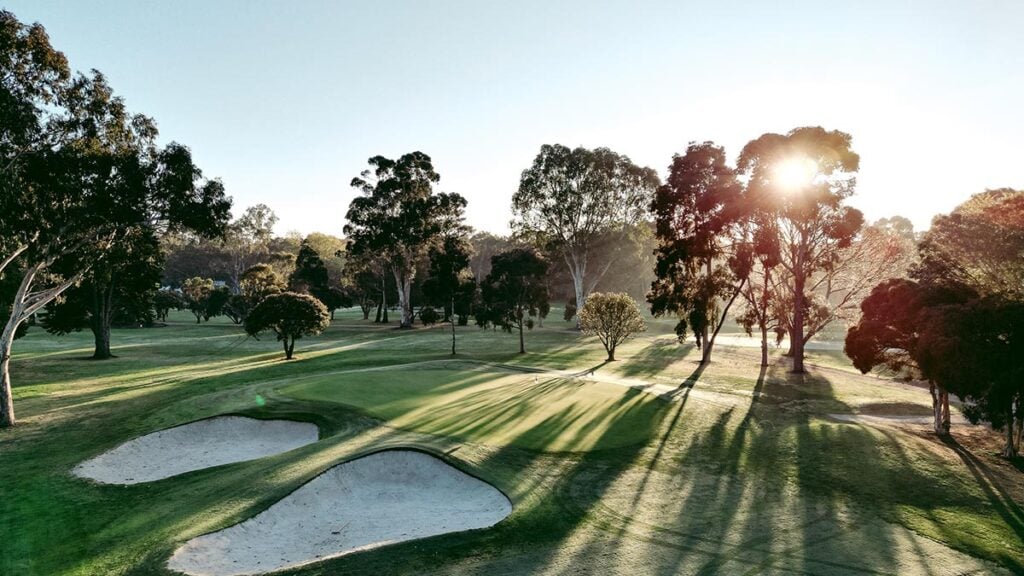Topping fields for driving distance might look impressive, but it’s not the path for Tiger Woods to reach the winner’s circle again.
At the 2014 British Open, the vagaries of the draw gave Australia’s Rhein Gibson a third-round tee-time alongside Tiger Woods and Jordan Spieth. It was a heady realisation for the boy from Lismore and gave him a front-row seat in the game’s grandest championship to arguably the best golfer of all time and the canniest player of the modern generation.
A month or so later, Gibson suffered the poor fortune of an 18-hole pairing with myself. I’d attended that Open Championship at Hoylake, meeting Gibson for the first time on the practice green early in the week. Our paths did not cross again during the tournament so I was keen to ask the laconic one-time 55-shooter his thoughts from his dream pairing a few weeks prior. Gibson offered some handy insights into the occasion, both playing partners and the championship. When talk turned to Tiger Woods and the state of his game – remember, he was the reigning US PGA Tour Player of the Year at the time – Gibson confirmed something I’d been thinking for a while: Tiger doesn’t need to drive the ball 300 metres to beat today’s players.
A 12th-place finish at the just-ended Honda Classic represents great progress for the still-recovering Woods, who was teeing it up for just the third time in 12 months and on a bear of a golf course at PGA National. Opinions have been mixed on Tiger’s chances as he returns from back surgery and adjusts after an ultra-light playing schedule these past few years. But I still like Gibson’s viewpoint from three-and-a-half years ago.
The most impressive aspect of Woods’ game at Hoylake that day? His iron play. There was a crispness and control to his irons, Gibson said, that was unlike anything he’d witnessed before. And, he added, Tiger’s short game and putting were in a similar league.
“So,” I asked, “does he still need to try to keep pace with the young bucks off the tee in order to beat them?”
No, Gibson said, before echoing what I was thinking: that relying on precision irons, even if struck from well behind his opponents, could extend an ageing Tiger’s career far longer than most golfers of his age and physical frailty.
Today I was startled to hear that Tiger led the driving distance stats for the field at the Honda. While superficially a great sign – an indication of strong physical health if nothing else – it tells me he’s still chasing the long ball. I just wonder, a) How successful a gameplan that’s likely to be, and b) How much longer his ailing body will allow him to do so.
Justin Thomas won this one, beating Woods by eight strokes, yet one gets the feeling if Tiger had seen the short grass just a little more often, accepted coming into the par-4 greens in particular from a little farther back, he could have pushed the current Player of the Year more than he did, perhaps frustrating and dismantling his younger rivals with a series of pinpoint approaches and a sharp short game.
That’s the way forward for Tiger Woods. He just needs to see it.




